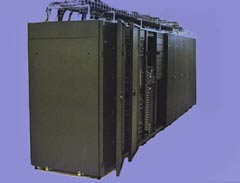|
|
We have developed a number of computational tools to simulate electronic and optical properties of semiconductor nanostructures. Calculations are usually run on our local linux cluster. For massively parallelized calculations we access CINECA Supercomputation Center (Bologna, Italy).
Our currently available simulation codes include:
|
Grup de Química Quàntica. Dpt.
Química Física i Analítica. Escola Superior de Tecnologia i
Ciències Experimentals. |
